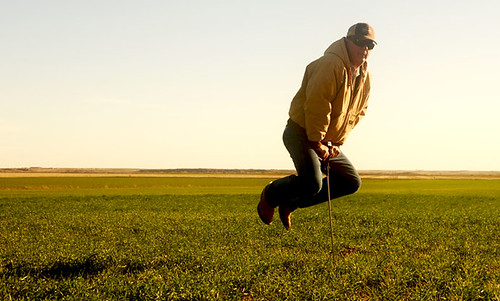
Clay County, Texas farmer Tommy Henderson may not know everything about farming, but he’s got more than the basics covered—even during a historic drought.
Over the last two years, Henderson’s crops have received just half the average annual rainfall.
“Yeah, I need rain,” he admits. “But I think my neighbors need it a little worse than I do.”
His neighbors are conventional farmers, plowing their fields over many times to prepare a seedbed for their wheat crop. With less than an inch of rain falling since the beginning of October, many wheat crops in the area are beginning to fail.
Not Henderson’s. Three years ago he took a leap of faith and made a drastic change in his farming operation. With assistance from USDA’s Natural Resource Conservation Service and other sources, he became a no-till farmer.
As farmers know, healthy soil is productive soil. Henderson’s three years of no-till management, which leaves the previous crop’s plant residue in the field, has already improved the soil structure on even his hardest clay soils. Healthier soils allow plant roots to penetrate deep and find new moisture and nutrient layers to keep them alive.
After researching and attending several workshops on ways to improve soil health, Henderson made an additional change in his farm management program last year when he planted summer cover crops of guar beans and sesame seeds.
Henderson says he chose these particular crops for their ability to add nitrogen to the soil.
“In the past I have had to buy nitrogen to add to the soil,” he says. “But now, with legume crops like the guar beans, sesame seeds, cow peas and some others that have an 8:1 carbon-to-nitrogen ratio, I can essentially grow my own nitrogen. That is a big savings in itself.”
Henderson only considers drought-tolerant varieties for his summer crops. While his crops last summer did use some of the moisture in the soil, Henderson says in the end they helped the soil retain more moisture than it could have without the crop.

“You can’t buy rain, so the fact that the cover crop is why my wheat crop has access to moisture in the middle of a drought is a big deal,” he says.
Henderson’s soil might remain under cover, but his success with cover crops won’t. This success will be important as Henderson and other farmers gear up for what is shaping up, according to government forecasts, to be another dry growing season in many parts of the country in 2013.
Get more information about USDA’s 2012 conservation results.

